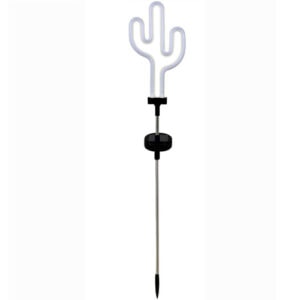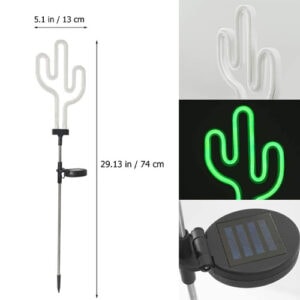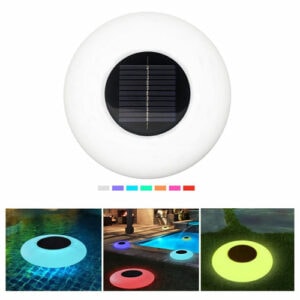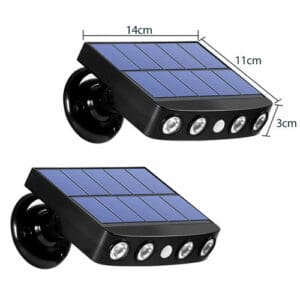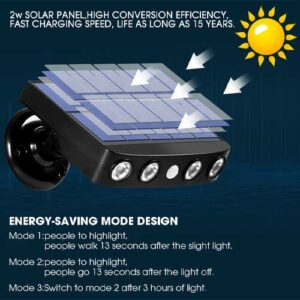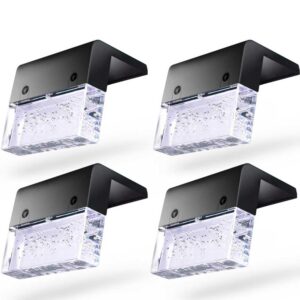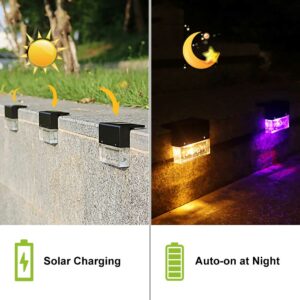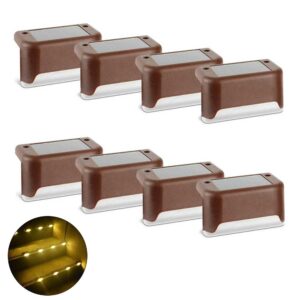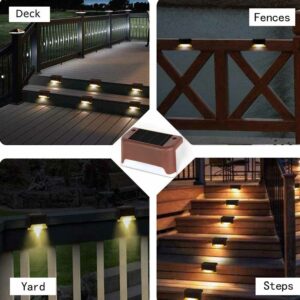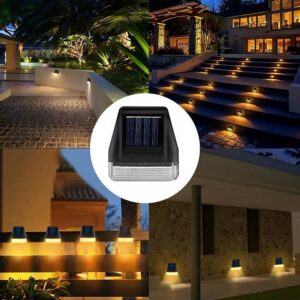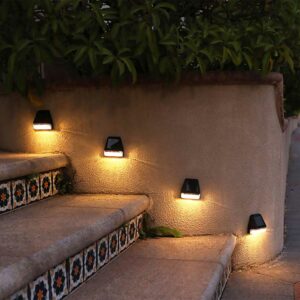Solar Step Lights
Showing all 3 results
Showing all 3 results
Solar outdoor step lights offer an energy-efficient and eco-friendly way of illuminating porches, stairs, pathways, and other such dim areas around your house. Solar step lights need to be attached to durable solar panels that collect sunlight, so they are to be set up in an area most exposed to sunlight.
With about 4 to 6 hours of daily charging, these solar LED step lights can last up to 12 hours. Easy to install and with no maintenance requirements, these lights are a great idea to accentuate decors in and around your garden and property at large.
How Do Solar Step Lights Work?
Solar step lights are like mini satellites in the sense that they absorb, generate, and store their power to be used at night. You will find a solar panel, a controller board, and a rechargeable battery in the package. The controller board includes a photo resistor and a solar array. When the photoresistor senses no light or little light, the LEDs and the battery are activated.
Connect the solar cells to the battery and now both will be responsible for collecting, converting, and storing sunlight. One solar cell generates 0.4 volts on average, so a solar light usually takes up 4 cells. This process goes on till the battery is fully charged.
Why Buy Solar Deck Lights?
The reasons for which you should get solar step lights are many, but below are the most enticing ones:
- Easy to install
- No wiring required
- Provides aesthetic appeal
- Ensures safety in the dark
- Highly affordable
- Cost- Saving
- Environment-friendly lighting solution
Factors To Consider Before Buying Solar Step Lights
1. Design
Aesthetics have a lot to play when it comes to backyards. If the proper lights are not in place, and if they do not go with the decor, it can look distasteful. As with solar spot lights and even solar pathway lights, solar step lights come in different shapes and designs too. Make sure the design of your solar step lights go well with your garden, porch, backyard, stairs, or wherever else you decide to position them.
2. Brightness
If a well-lit step is mandatory for you, look for solar outdoor step lights with more brightness levels, but if you are looking for these lights mostly for aesthetics, you can compromise a little on the intensity. Solar lights usually come with many adjustable brightness levels.
Where you should rather not willingly compromise in brightness and intensity is solar spot lights and outdoor solar wall lights. Reason being, both these are supposed to illuminate a wider area as opposed to solar deck lights.
3. Battery
The strength of good LED solar step lights is in their battery. If the batteries die quickly, the light is of no use. So, make sure you find solar step lights with durable batteries or batteries that are easily replaceable.
4. Weather Resistance
The solar step lights are to be placed outdoors, so they will probably see some rain. While some areas might be more prone to rainy weather than others, your solar outdoor step lights will inevitably face some water at some point or the other. It is best to be prepared and go for lights with higher IP ratings of at least IP44. Anything less and you risk damaging your step lights. Extending the same logic to solar pool lights, you should be looking for IP65 and above. Heliosglow solar pool lights are a good place to start looking if you’re open to recommendations. Our top-selling pool light, the HeliosGlow™ Solar LED Floating Swimming Pool Lights are IP65 rated against water and weather damage.
5. Durability
What is the point of buying lights that do not last? You are going to want solar LED step lights that can outlast its value in years. Many solar step lights are placed flat on the ground where they can be stepped on or accidentally driven over. You would not want your solar step lights to crumble at the very first hint of contact, so make sure you go for stainless steel options that can withstand tons of pressure before finally giving away.
6. Adjustability
Some solar step lights come with adjustable heads that can be moved to point the light in different directions. This can be useful if you want to highlight different areas or change the focus of the light over time.
